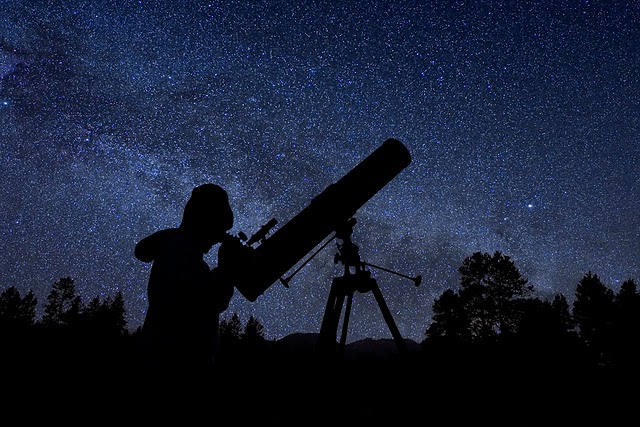Starquest – An Observatory Program in Keystone’s Mountains

More than Just Stars
Look up. All around us are massive spheres exploding into storms of fire and light. These glorious object are constantly, shining light on an otherwise dark and empty universe. The light emitted travels unfathomable distances to reach our eyes here on the surface of Earth. Have you noticed?
Many of the students at Keystone Science School come to the campus from urban settings where light pollution hides the majority of the shining stars. On clear nights in the mountains, they look up and are often stunned by the seemingly infinite numbers of stars. We are lucky to live in a place that provides such amazing views, both day and night. Students can view the planets and stars through the high-powered telescope in the Keystone Science School observatory, but all you really need to appreciate the majesty of our mountain night sky, is a warm coat, a little patience, and our light collecting eyes.
When traveling in the wilderness, hikers need to take maps to guide their journeys. It’s no different when exploring the night sky. There are many Internet sites that provide free sky maps. A good one we use skymaps.com. Find one, print it out, and wait for a clear night. Find a dark spot away from lights and tall buildings and give your eyes a few minutes to adjust to the darkness. Try to use a red light to view your sky map, as it will not ruin your night vision powered by the sensitive rod-shaped cells in our eyes. The naked eye is surprisingly powerful and will allow you to see many stars and constellations. A pair of binoculars is a great tool to see objects that your eyes alone cannot while still giving a wide enough view to find constellations.
For your first viewing, try to find the well-known constellation Orion, visible in the Southeast of the early evening sky. The three stars of Orion’s belt fall in a straight line and are the easiest way to identify the constellation. The bright star Rigel, one of the brightest stars in the night sky, represents one of Orion’s legs, and his two shoulders are represented by the stars Bellatrix and Betelgeuse, which is reddish in color. Betelgeuse means ”armpit of the great one”. Other bright stars make up the two arms, one holding a shield and the other a club. The famous Orion Nebula is located in Orion’s sword hanging from his belt and is so bright that the naked eye can easily see the fuzzy patch of interstellar dust.
Orion is one of the most ancient constellations, formed approximately 1.5 million years ago. It inspired many stories in Native American and Greek mythology and literature, including the story of Orion and Artemis. Legend says that Orion, a great hunter who was half-man, half-god, fell in love with Artemis, the daughter of Zeus, king of the gods. Artemis’ brother Apollo, in an attempt to protect his sister from the powerful hunter, sent a scorpion, called Scorpius to kill Orion while he slept. Artemis, deeply saddened by Orion’s death, became very angry with her brother, who then agreed to put Orion’s body in the sky so she could remember him always.
There are many, many other stars and constellations to explore in the clear night sky over the Rocky Mountains – all you have to do is look up. Have fun and enjoying challenging yourself!
SIDEBAR: STAR FACTS
The colors of stars are determined by their temperature
The closest star to Earth, besides our Sun, is Proxima Centauri, located 4.2 light-years away.
Stars often come in pairs (known as binary stars), orbiting a common center of gravity
When stars appear to “twinkle,” it’s actually turbulence in the Earth’s atmosphere refracting the light we see.
Most objects in the sky were mapped with telescopes equivalent in magnitude to a simple pair of binoculars. So find a pair and maybe you could start the next great story in the sky!
Keystone Science School offers a weekly opportunity for the public to view the stars from their observatory. This program, Starquest, provides a chance to learn about celestial objects from our resident instructors and to get an up-close and personal view through our amazing telescope. For more information, call 970.468.2098 or visit keystonescienceschool.org.
By Mitchell Whittier
Keystone Science School Field Instructor

